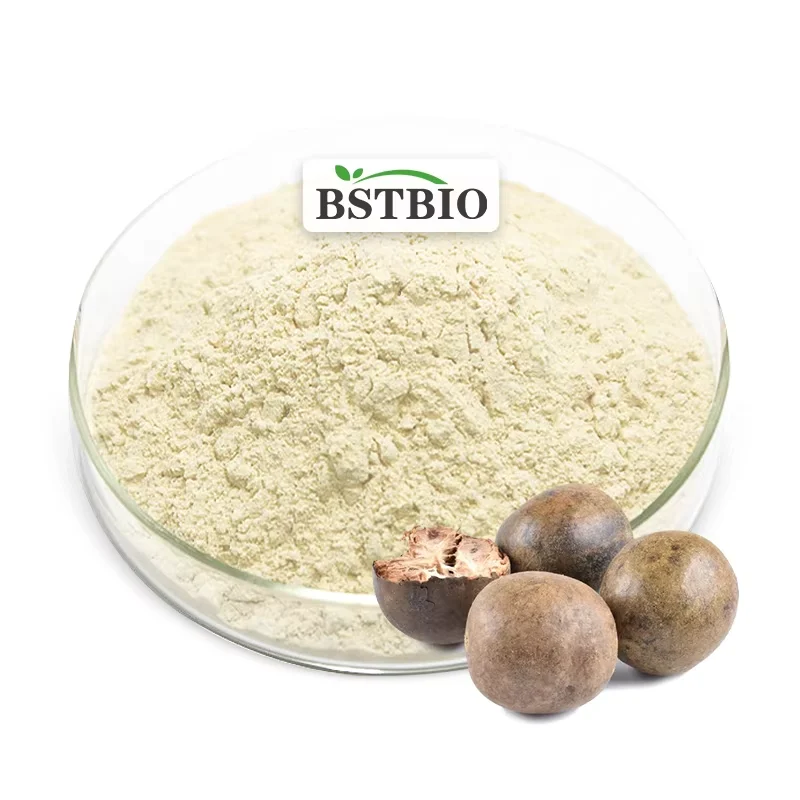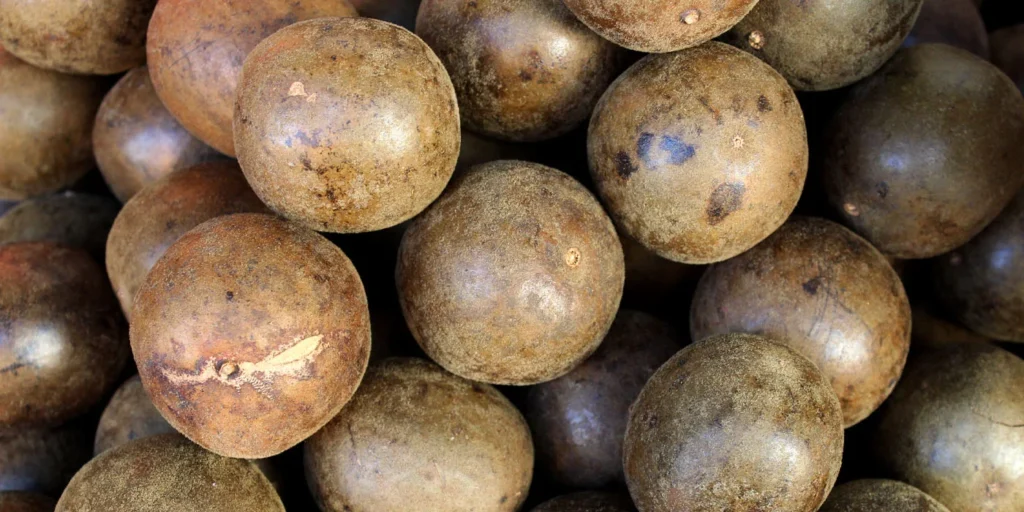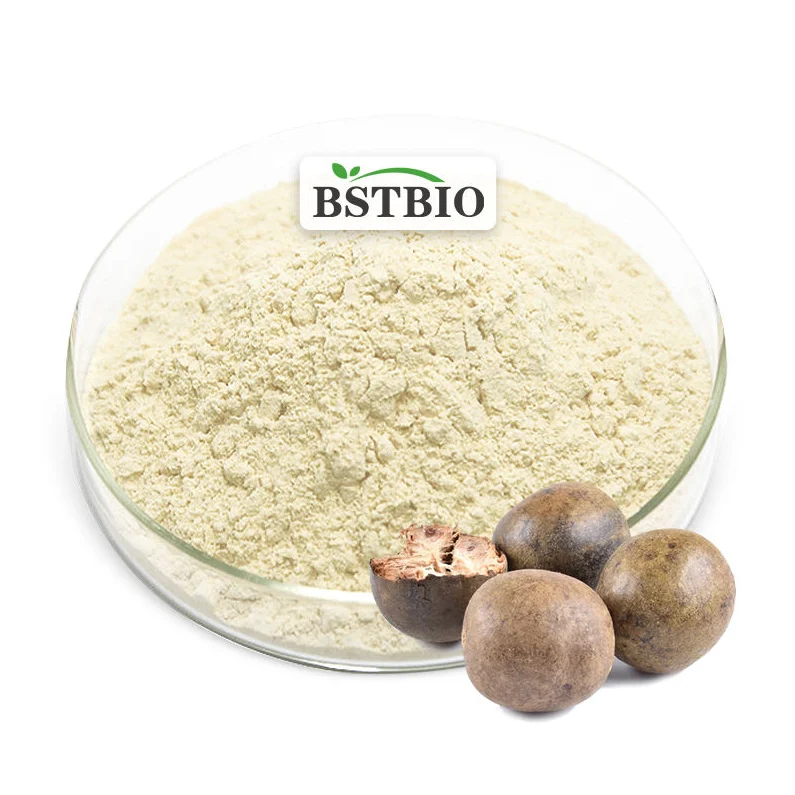В постоянно расширяющемся мире альтернативных сахаров, подсластитель из фруктов монка стал одним из лидеров, который славится своей натуральностью, нулевой калорийностью и насыщенным сладким вкусом. Но как потребители, заботящиеся о своем здоровье, мы знаем, что сначала нужно задать самый важный вопрос: Безопасен ли экстракт плодов монаха?
В этом руководстве вы найдете исчерпывающий, научно обоснованный ответ. Мы рассмотрим все аспекты, начиная с его одобрения регулирующими органами и исторического использования и заканчивая его полезными свойствами и возможными побочными эффектами. Мы также рассмотрим важнейшую, часто упускаемую из виду разницу между чистым плодом монах-фрукта и обычными смесями, которые можно найти на полках магазинов.
Сначала прямой ответ: Безопасен ли экстракт плодов монаха?
Давайте перейдем к делу: Да, чистый экстракт плодов монаха считается безопасным для употребления. Этот вывод основан не на маркетинговых заявлениях, а на одобрении регулирующих органов, длительной истории применения и современном научном понимании.
Одобрение FDA: Общепризнанная безопасность (GRAS)
В США Управление по санитарному надзору за качеством пищевых продуктов и медикаментов (FDA) определило, что высокочистые экстракт плодов монаха в роли "Общепризнанная безопасность" (GRAS). Это не просто одобрение. Статус GRAS означает, что группа квалифицированных экспертов изучила имеющиеся научные данные и пришла к выводу, что вещество безопасно для использования в пищевых продуктах по назначению. Плоды монаха имеют этот статус с 2010 года, что ставит их в одну категорию безопасности с такими распространенными ингредиентами, как соль, уксус и пищевая сода.
Многолетняя история традиционного использования
Задолго до того, как это стало глобальной тенденцией в области здравоохранения, плоды монаха - или Луо Хань Го как его называют в родном Китае, на протяжении веков был основным элементом традиционной китайской медицины. Собранный в субтропических горах Южного Китая, он традиционно заваривался в охлаждающие чаи, чтобы успокоить боль в горле и уменьшить мокроту. Такая давняя история употребления растения людьми без зарегистрированных побочных эффектов служит убедительным анекдотическим доказательством его безопасности.
Что говорят современные исследования о его безопасности
Современная наука подтверждает репутацию монадного фрукта как безопасного продукта. Исследования основных сладких соединений в плодах монаха, известных как могрозиды, не выявили никаких признаков токсичности даже в очень высоких дозах. Хотя долгосрочные исследования на людях еще не завершены, существующий массив исследований в сочетании с его статусом GRAS и многовековым использованием рисует четкую картину: чистый экстракт плодов монаха это безопасный выбор для населения.
Что такое экстракт плодов монаха и как его делают?
Понимание того, откуда берется этот подсластитель, является ключом к пониманию его "натуральности". В отличие от искусственных подсластителей, созданных в лабораторных условиях, экстракт плодов монаха начинается с маленькой зеленой дыни.
От маленькой зеленой дыни до мощного подсластителя
Монашеский фрукт, или Siraitia grosvenoriiЭто родственник таких бахчевых культур, как тыква и огурец. Сам фрукт не употребляется в свежем виде из-за быстрого увядания после сбора. Его ценность заключается в насыщенном сладком соке, содержащемся внутри.
Секрет его сладости: Что такое могрозиды?
Сладость монадного фрукта обусловлена не фруктозой или сахарозой, как в обычных фруктах. Ее источником является уникальный класс антиоксидантов под названием могрозиды. Эти соединения невероятно сильны - по некоторым оценкам, они в 150-250 раз слаще столового сахара. Поскольку человеческий организм метаболизирует могрозиды иначе, чем простые сахара, они не содержат калорий и углеводов и не влияют на уровень сахара в крови.
Процесс экстракции: Почему он считается "натуральным"
Процесс создания подсластитель из фруктов монка прямолинеен, что подтверждает его естественное утверждение:
- Уборка урожая: Собираются свежие фрукты.
- Дробление: Фрукты измельчают, чтобы выделился сок.
- Настойка: Измельченные фрукты настаиваются в горячей воде, в результате чего получается сладкий настой.
- Фильтрация: Жидкость фильтруют, чтобы отделить сладкие могрозиды от фруктовой мякоти, фруктозы и сахарозы.
- Сушка: Полученную чистую сладкую жидкость высушивают и превращают в концентрированный порошок.
Этот процесс отделяет сладкие компоненты, не содержащие калорий, от остальных фруктов, в результате чего получается чисто сладкий продукт без сахара.
Великая дискуссия: Чистый плод монаха против смесей (с эритритом)
Это, пожалуй, самый важный раздел для любого потребителя. Если вы когда-либо испытывали дискомфорт в пищеварительном тракте после употребления продукта с монк-фруктом, то, скорее всего, виноват не сам монк-фрукт. Проблема почти всегда кроется в сухие веществаЧаще всего это эритрит.
Почему их смешивают? Роль сухих веществ
Чистый экстракт плодов монаха невероятно силен. Крошечной щепотки достаточно, чтобы подсластить чашку кофе. Это затрудняет его измерение для повседневного использования, особенно для выпечки, где важен объем. Чтобы решить эту проблему, производители смешивают экстракт с сухой смесью, чтобы получить продукт, который измеряется 1:1 с сахаром.
ЭритритСахарный спирт - самый распространенный вариант. Он также не содержит калорий и не повышает уровень сахара в крови. Однако он не так легко переносится всеми.
Потенциальные побочные эффекты: Кто виноват: плоды монаха или эритрит?
Чистый плод монаха не имеет известных побочных эффектов. Эритрит, напротив, известен тем, что вызывает проблемы с пищеварением у некоторых людей, особенно при употреблении в больших количествах. К таким побочным эффектам могут относиться:
- Вздутие
- Газ
- Спазмы в желудке
- Диарея
Если у вас возникли такие симптомы, возможно, вы чувствительны к эритритолу, а не к монах-фрукту.
Как прочитать этикетку и выбрать чистый продукт
Чтобы избежать нежелательных побочных эффектов, всегда проверяйте список ингредиентов.
- Смешанный продукт: Первым ингредиентом, скорее всего, будет "Эритритол", а затем "Экстракт плодов монаха".
- Чистый продукт: В списке ингредиентов будет просто указано "Экстракт плодов монаха" или "Экстракт могрозида V". Вы также можете найти чистый плод монако в форме жидких капель, которые не требуют добавок.
Топ-5 преимуществ использования подсластителя из плодов монаха для здоровья
Помимо того, что монадный фрукт является безопасным способом удовлетворить тягу к сладкому, он обладает рядом ощутимых преимуществ для здоровья.
1. Ноль калорий для эффективного контроля веса
Потому что организм не усваивает могрозиды, подсластитель из фруктов монка содержит ноль калорий. Это делает его отличным средством для тех, кто стремится снизить общее потребление калорий для снижения или поддержания веса, не испытывая при этом лишений.
2. Нулевой гликемический индекс: Безопасный выбор для диабетиков
Экстракт плодов монаха имеет нулевой гликемический индекс (ГИ). Это означает, что он не повышает уровень сахара и инсулина в крови, что делает его идеальным заменителем сахара для людей с диабетом 1 и 2 типа. Он позволяет им наслаждаться сладостями без ущерба для контроля уровня глюкозы в крови.
3. Содержит антиоксидантные свойства (могрозиды)
Могрозиды, обеспечивающие сладость, также являются мощными антиоксидантами. Антиоксиданты помогают бороться со свободными радикалами в организме, которые представляют собой нестабильные молекулы, вызывающие повреждение клеток и способствующие развитию воспаления и хронических заболеваний. Хотя необходимы дополнительные исследования, эти свойства могут оказывать противовоспалительное действие.
4. Не способствует развитию кариеса
В отличие от сахара, плоды монке не содержат кариогенных веществ. Бактерии во рту, вызывающие кариес, не могут питаться могрозидами, поэтому употребление подсластителя из плодов монаха не способствует развитию кариеса.
5. Отсутствие известных вредных побочных эффектов (для чистого экстракта)
Как уже говорилось ранее, одним из самых больших преимуществ является то, что он не делать. Чистый экстракт плодов монаха не вызывает расстройства пищеварения, горького послевкусия или проблем с безопасностью, связанных с некоторыми другими подсластителями.
Монаховые плоды против стевии: Какой подсластитель вам подходит?
Стевия - еще один популярный натуральный подсластитель с нулевой калорийностью. При всей своей схожести они имеют ключевые различия.
Сравнение "с ног на голову": Вкус, сладость и стоимость
| Характеристика | Подсластитель из плодов монаха | Подсластитель стевия |
|---|---|---|
| Источник | Фрукты Ло Хань Го | Листья растения Stevia rebaudiana |
| Сладость | В 150-250 раз слаще сахара | В 200-350 раз слаще сахара |
| Вкусовой профиль | Чистый, слегка фруктовый финиш | Может иметь горькое или лакричное послевкусие |
| Термостабильность | Очень устойчивый, отлично подходит для выпечки | Стабильный, хорошо подходит для выпечки |
| Стоимость | Как правило, дороже | Более доступные и недорогие |
Плюсы и минусы плодов монахинь
- Плюсы: Чистый вкус с минимальным послевкусием, устойчив при приготовлении пищи и выпечки.
- Конс: Более дорогой и менее доступный, чем стевия.
Плюсы и минусы стевии
- Плюсы: Недорогой, широко доступен, немного слаще, чем монах-фрукт.
- Конс: Многим не нравится его выраженное, слегка горьковатое послевкусие.
Вердикт: Сделайте свой выбор
Выбор между плоды монка против стевии часто сводится к личным предпочтениям по вкусу и бюджету. Если вы чувствительны к послевкусию стевии, то, скорее всего, вам больше подойдет плод монка.
Как использовать подсластитель из плодов монахинь в повседневной жизни
Включить монадный фрукт в свой рацион очень просто.
В разделе Кофе, чай и другие напитки
Это самый простой способ применения. Достаточно нескольких капель жидкого экстракта или небольшой щепотки чистого порошка, чтобы подсластить утренний кофе, чай, лимонад или смузи.
Советы по выпечке и приготовлению блюд с использованием плодов монаха
Монахов плод термостабилен, что делает его идеальным для выпечки. Однако помните, что сахар не только придает сладость рецептам - он также способствует подрумяниванию, текстуре и влажности.
- Используйте смесь для придания объема: Для рецептов, где важна сыпучесть (например, для тортов и печенья), лучше всего использовать смесь эритрита и фруктов монах 1:1.
- Добавьте влаги: Если вы используете чистый монах-фрукт, вам может понадобиться добавить в рецепт влагу с помощью таких ингредиентов, как йогурт, яблочное пюре или тыквенное пюре.
- Ожидайте более светлых цветов: Выпечка, приготовленная с использованием плодов монахинь, не будет коричневой, как при использовании сахара.
Поиск правильного коэффициента конверсии в сахар
Всегда проверяйте упаковку производителя, поскольку концентрация может быть разной. Для чистых экстрактов конверсия очень велика - крошечная доля чайной ложки может заменить несколько столовых ложек сахара. Для смесей 1:1 преобразование простое: одна чашка смеси заменяет одну чашку сахара.
Часто задаваемые вопросы (FAQ)
Вызывает ли монадный фрукт воспаление?
Нет, наоборот. Могрозиды, содержащиеся в плодах монаха, являются антиоксидантами, которые, как показали некоторые исследования, оказывают противовоспалительное действие.
Можно ли съесть слишком много плодов монахинь?
Не существует установленного верхнего предела потребления плодов монки. Учитывая его сильную сладость, его трудно употреблять в больших количествах. Как и в любом другом продукте, ключевым моментом является умеренность.
Влияет ли монадный фрукт на здоровье кишечника?
Современные исследования показывают, что чистый монах-фрукт не оказывает негативного влияния на микробиоту кишечника. Однако смеси, содержащие сахарные спирты, такие как эритрит, могут вызывать расстройство пищеварения у некоторых людей, нарушая баланс кишечных бактерий.
Безопасен ли плод монах во время беременности или для детей?
Плоды монаха входят в список GRAS Управления по контролю за продуктами и лекарствами США и считаются безопасными для всех групп населения, включая детей, беременных и кормящих женщин. Однако всегда лучше проконсультироваться с медицинским работником, прежде чем вносить значительные изменения в рацион.
Итог: Стоит ли вам попробовать экстракт плодов монаха?
Для тех, кто хочет сократить потребление сахара, не жертвуя сладостью, экстракт плодов монаха является отличным и безопасным выбором. Он натуральный, не содержит калорий, подходит для диабетиков и не имеет побочных эффектов, которые характерны для многих других подсластителей.
Главное - быть разборчивым потребителем. Обращайте пристальное внимание на список ингредиентов, чтобы знать, покупаете ли вы чистый продукт или смесь с эритритолом. Понимая разницу, вы сможете насладиться всеми преимуществами этого замечательного фрукта без возможных недостатков.





